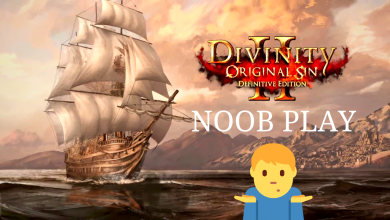![]() By now the saga of Too Human is the stuff of legends. Ten years in the making, and originally destined for the PS One, the game finally found its home on the Xbox 360. Let’s just say that the first installment in the trilogy probably should have been released during the PS One era to have gotten our full appreciation. As it stands today, its fun but it’s a bit of a mess.
By now the saga of Too Human is the stuff of legends. Ten years in the making, and originally destined for the PS One, the game finally found its home on the Xbox 360. Let’s just say that the first installment in the trilogy probably should have been released during the PS One era to have gotten our full appreciation. As it stands today, its fun but it’s a bit of a mess.
Too Human’s story is a unique take on Norse mythology. The usual staple of Norse gods are present – Odin, Thor, Loki, etc., but gods in Too Human are essentially cybernetically-enhanced humans; in other words, a geek’s wet dream. The gods in Too Human are known as the Aesir (from Wikipedia : In Old Norse, æsir, is the term denoting the principal gods of the pantheon of Norse paganism. They include many of the major figures, such as Odin, Frigg, Thor, Baldr and Tyr. They are one of the two groups of gods, the other being the Vanir. In Norse mythology, the two are described as having waged war against one another in the Æsir-Vanir War, resulting in the unification of the two into a single tribe of gods). The Aesir are all part of the Aesir Corporation that looks after MidGard (Gasp!! a well known reference here) – the capital city of the human race.
[singlepic=54,400,300,center]
You play Baldur (not the most obvious choice of gods for an action hero since Baldur is the Norse God of light and beauty), one of the Aesir who has suffered a personal tragedy. You are tasked with tacking the increasing menace posed by a race of machines, which is attacking humans and sucking the blood and organs out of them.
While the backdrop makes for excellent storytelling material and the game spins an interesting yarn out of it, it’s told in such a bizarre and disjointed manner that you will have a hard time comprehending what the fuss is all about. The game is split into four chapters of fairly short length and each has cutscenes sprinkled throughout. The editing and sequencing of the cutscenes will leave you scratching your head while you struggle to piece together the fragmented storytelling. Not a very nice way to deliver your message to your consumers after ten years of work. Bad Silicon Knights, bad!!
[singlepic=53,400,300,center]
When you start the game, you can choose between five types of characters, with one of them striking a balance between the attributes for melee combat, ranged combat, health and armour, while the remaining four are heavily tilted towards one of these four attributes. I chose the berserker during my play-through because he specialises in melee combat and I felt that melee was the best part of the game.
The gameplay is cast in the mould of your typical third-person perspective hack and slash on the lines of God of War, Devil May Cry or Ninja Gaiden. The big difference here, and this is what the developers have been thumping their chests about, is the use of the right analog stick for combat. In most action games, you traditionally use the left analog stick to move your character, right analog stick to control the camera and the face buttons to slice, dice and mash your foes. Too Human differs in offering a Diablo-style of action. You simply point the right analog stick in a direction and Baldur will slide across the floor and start attacking the nearest enemy in that direction with whatever melee weapon he is currently equipped with. It’s simple and executed very well in Too Human, but it does take a lot of the usual strategy out of the equation since you can decide what kind of attacks you can chain together.
[singlepic=55,400,300,center]
Advanced melee combat such as juggling enemies into the air can be executed by multiple direction taps and are a key skill to learn if you want to survive some of the game’s later combat situations. Repeatedly bashing opponents builds up your combo meter, which can be used to unleash a variety of power-ups and special attacks, which significantly lower the already low difficulty level of the game, but are very satisfying to use. The game also has ranged combat using a variety of guns, but its nowhere nearly as satisfying in play as the melee combat.
This being an action-RPG, there are tons and tons of loot that you will acquire during the course of the game, which can be used to upgrade and augment your character’s armour and weaponry. The RPG elements include customisable weapons, armour and cybernetics, skill tree progression and item hunting. The game has 15 different weapon classes, including two-handed swords, hammers, polearms, pistols, rifles, lasers, dual-wielded one-handed swords and staves. The weapons and armour have some of the most ridiculous names ever conceived in the annals of gaming and its worth playing through a bit of this game just to guffaw at these name.
[singlepic=64,400,300,center]
With every level you gain, you have 2 skill points, which can be used to level up a multitude of character powers and alignment-specific skills. At one point in the game, you will also have to make an irretraceable choice on your character’s alignment. The whole system seems heavily inspired by Diablo and is pretty well executed in that powers and upgrades gained by Baldur actually affect the gameplay significantly, so it captures the RPG spirit well enough.
The game world being cybernetically-enhanced, there’s also an element of hacking involved. But rather than the Mass Effect-style button press minigame, Too Human introduces the concept of the “Tree of Life”, which acts as a conduit between the real world and cyberspace. Cyberspace is depicted to be a lush forest, where Baldur has to move objects, smash gates, bridge gaps, etc. in order to overcome some obstacles in the real world, ergo, hacking. It’s a different take on the tired concept and is a welcome sight.
[singlepic=67,400,300,center]
Baldur loses health everytime he is hit (humph, some God) and can replenish it by picking up health drops from slain enemies or from smashed crystal pods (Too Human’s equivalent of crates). But it’s when Baldur dies, that things turn bizarre. When Baldur’s health drops to zero, an armoured angel called a Valkyrie descends from a light in the sky and carries Baldur’s body up into the light, following which, you are respawned 50 to 100 feet away from where you were slain. The only things affected are your equipment, which takes some damage, and your combo meter, which drops to zero. Otherwise, everything remains the same, including the damage taken by your enemies. So in effect, there is no penalty for death in this game (by-product of being a God, perhaps?). You can even have the damaged armour repaired at the workshop back in MidGard. The only drawback here is that the Valkyrie animation plays every time you die and cannot be skipped. So that’s about 10 seconds of your life you will never get back every time Baldur dies.
The graphics are mediocre and can be classified as a mix between Halo 2 and Halo 3. The character animation is pretty amateurish and certainly not what you would expect in a supposedly “AAA” title. The only redeeming factor in the visual department is the sweet poetry in motion that is Baldur’s slide and slash rhythm when attacking a horde of low level minions. This is when the game is at its absolute visual best.
[singlepic=81,400,300,center]
The sound is another area where the game falls short. There is rarely a cohesive feel to the background score and soundtrack. Too often you are abruptly jarred out of your immersion because the track suddenly changes like as if someone pressed forward skip on a CD player in the middle of a track. The voices are a mixed bag; the cutscenes are fine enough, but the voices of your allies during the game are insanely repetitive and a shoddy mess.
The game tries to increase its replay value by allowing you to create multiple characters, which you can play the game with independent of each other. At the game’s start screen, you can choose between the characters you have created and will resume from the point in the game you left off the last time you played with that character. The game also supports two-player co-op over Xbox Live, but I haven’t had the chance to try this out yet. Oh, and there’s no local co-op so a big thumbs down to the devs for leaving out this feature.
[singlepic=52,400,300,center]
Since this is the first of a planned trilogy, the developers have announced that you can level up your character from 1-50 in this game, then continue the sequel with the same character for levels 51-100 and complete the trilogy with for levels 101-150. But unless the game is seriously taken apart and rebuilt for “IMPROVEMENT + 135”, I seriously doubt many gamers will be chomping at the bit to reach level 150.
Thankfully, the game is quite short at around 10 hours and is generally quite easy, so it’s quite enjoyable in its own way. But I wouldn’t call this a must buy by any stretch of imagination. If you are into an action RPG in the Diablo mould, then this might just tickle your fancy, so I would recommend trying it out first before you make a purchase decision.
IndianVideoGamer Verdict – 5/10 (Borrow)
Too Human is in stores now for Xbox 360 at Rs 1,895
Join the discussion at the IndianVideoGamer Community forums
More images



